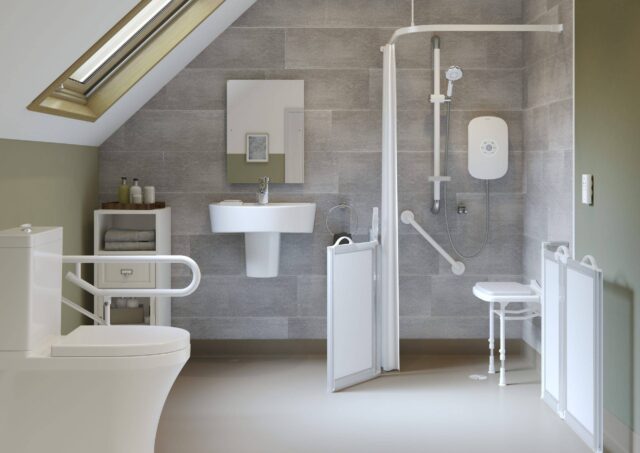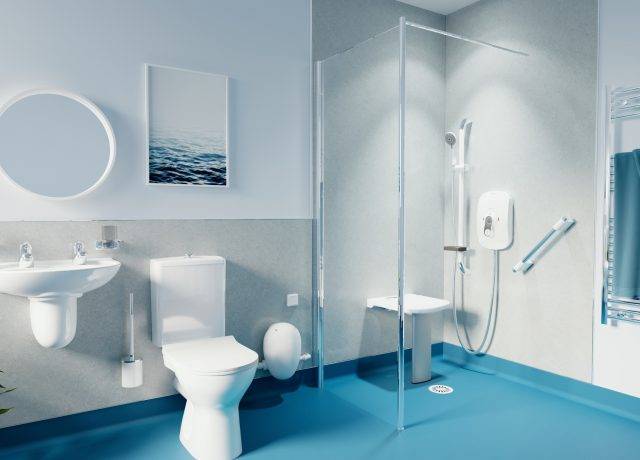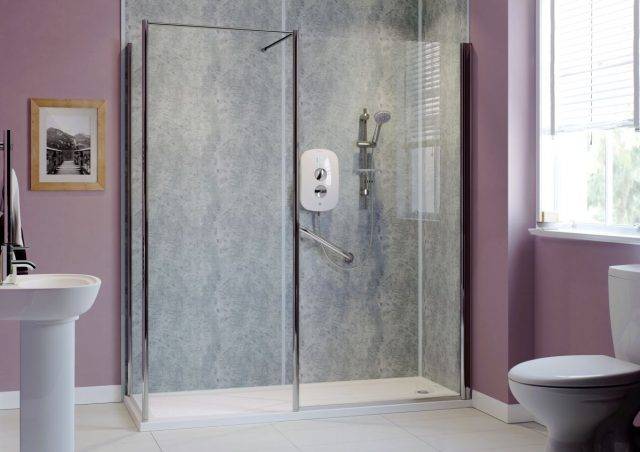The Accessible Home Edit: How To Adapt a Bathroom For a Wheelchair User
Our mission at Mobility in Motion is to keep your life open and full of possibilities by maintaining an active lifestyle outside the home. But we also understand the importance of enabling independence in your own home, which is why we have teamed up with EA Mobility, home adaptation specialists, to produce The Accessible Home Edit. Firstly, we look at how to adapt a bathroom for a wheelchair user.
Adapting a bathroom can drastically improve quality of life, health, well-being, and independence for people with mobility struggles. Research conducted in 2020 showed that nearly one in four disabled people did not have a home that catered for their access requirements. Particularly the bathroom space proved difficult, with disabled people 22 times more likely to be unable to use the whole bathroom without needing assistance during the COVID lockdowns. A separate piece of research demonstrated that falls in the bathroom are almost two and a half times more likely to result in injury than in the living room or kitchen areas.
To determine the best products for your needs, consider the daily challenges you face. For instance, is it difficult using the toilet, getting in and out of the bath, or using the shower? Do you worry about slipping or falling, or struggle with drying after a bath or shower? Let’s look at some of the popular solutions available to adapt a bathroom for a wheelchair user.
Bathing in Comfort
A lot of people prefer not to give up the luxury of a warm bath. There is a good reason for this – it offers some physical benefits such as reducing stiffness and swelling in the joints, as well as psychological advantages such as calming the mind and preparing for sleep. A bath lift, such as the Hydrolift from EA Mobility, is an easy addition to an existing bath. It is powered by a rechargeable battery, requires no electrical connection, and retracts discreetly. It can be operated by a button on the unit or a handheld control and features a safety seat and non-slip lifting belt for easy transfer. A bath lift is perfect for those with reduced body strength or stiff joints and is an economical option for those who want to retain their original bathroom.
Stylish and Safe Showers
For those with mobility challenges, even a conventional shower can prove difficult. The shower trays often used are raised several inches off the ground and have a deep lip to contain the water, making access a challenge.
A level access shower, however, is almost level with the bathroom floor and has a small lip of 10mm or less, making it wheelchair accessible without any assistance being required. Although some structural changes may be required to the bathroom space in order to facilitate the lower tray, level access showers can have the same or even slightly smaller footprint than traditional showers. This allows for a smooth transition without altering the rest of the bathroom.
Furthermore, level access showers can come with a carer-height shower screen which folds over the lower part of the shower entry for easy assistance and to prevent water from splashing out of the shower tray.
Hands-free Smart Toilets
Conventional toilets can prove difficult for those with limited mobility. Twisting, bending and cleaning oneself can be challenging. A smart toilet reduces these difficulties and improves personal hygiene. The accessible hand controls combined with a warm water stream and warm air provide complete cleaning and drying. A smart toilet can also be adapted to a more comfortable height for the user, thus reducing knee and joint pressure, and making it easier to sit and stand. For additional support, consider installing a grab rail near the toilet or, if a wall is not available, a drop-down rail.
Wet Rooms For The Win
Wet rooms provide a seamless and luxurious look that’s often seen in hotels. However, they’re also a cost-effective solution for practical, accessible bathrooms. In order to install a wet room, the floor is sloped to divert the water towards a built-in drain and is sealed with a waterproofing layer and non-slip flooring. With no shower tray or door, access is much easier for those with mobility challenges.
In addition to accessibility, wet rooms offer:
- Easy maintenance without the risk of trips or falls
- Hygienic with no grout lines for bacteria growth or dampness build-up
- Customised to fit your bathroom’s shape and size, no matter how big or small the space is
- Non-slip flooring even when wet reduces the risk of injuries
Specialist Help Bespoke For Your Unique Needs
As a leading provider of bathroom adaptations, EA Mobility offer years of expertise on how to adapt a bathroom along with a wide range of solutions tailored to meet the bespoke requirements of each client. Our goal is to create functional yet aesthetically pleasing bathrooms, where you can start and end each day with ease and comfort. To learn more or to request a free brochure please visit our website or call us on 0808 175 1998

Lifestyle
The Accessible Home Edit: Barrier-Free Wetrooms
Next up in our Accessible Home Edit series with EA Mobility, we’re taking a closer look at barrier-free wetrooms. Wetrooms offer a seamless and stylish solution…

Lifestyle
The Accessible Home Edit: How To Adapt a Bathroom For a Wheelchair User
We understand the importance of enabling independence in your own home, which is why we have teamed up with EA Mobility, home adaptation specialists, to produce…

Lifestyle
The Accessible Home Edit: Walk-In Showers for The Elderly and Disabled
Are you or a loved one facing mobility challenges that make daily tasks like bathing a little more complicated? Walk-in showers for the elderly and disabled…